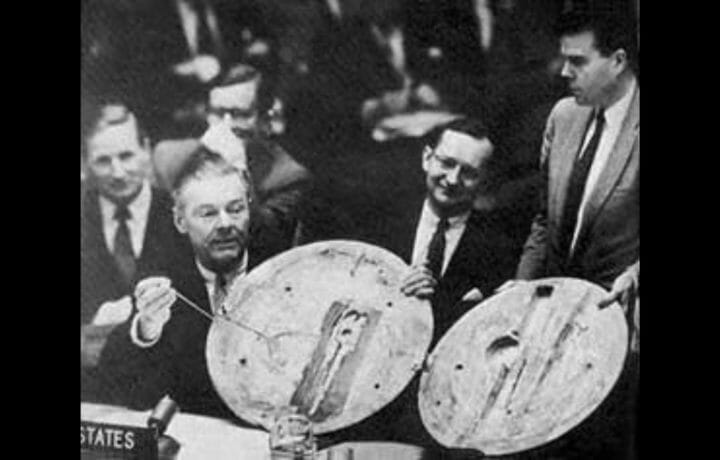Between 1945 and 1952, a carved wooden Great Seal of the United States hung in the residence of the U.S. ambassador to the Soviet Union in Moscow. The plaque had been presented to ambassador W. Averell Harriman by the Young Pioneer Organisation of the Soviet Union. Unsuspected by the Americans, the device contained a passive listening device designed by Soviet inventor Leon Theremin, yes, the inventor of the theremin!
The device consisted of a capacitive microphone connected to a quarter wavelength antenna tuned to a frequency of 330 MHz. When illuminated by a continuous wave signal at that frequency, the device, which contained no batteries or active electronic components at all, would re-radiate a signal modulated by the audio from the microphone on a higher harmonic, allowing eavesdropping on conversations in the ambassador’s study.
The device was accidentally discovered in 1951 when a British radio operator happened to tune into the transmitting frequency while the Soviets were illuminating the bug with the power signal and heard conversations in English. The device was discovered inside the seal and subsequently analysed by U.S. and British intelligence agencies.
In May 1960, during the session at the United Nations Security Council debating the U-2 overflight and shoot-down by the Soviet Union, U.S. ambassador Henry Cabot Lodge showed the seal and bug as evidence “the Soviets spy on us as well”.

